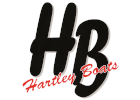Tuning your Rooster
The Rooster Streaker has been around for a while now. They are proving to be well-built boats which are easy to make go fast and look after. They are not difficult to set up either – and hopefully, through this article, owners of the Rooster Streaker will have a little more knowledge of how to achieve the faster settings.
Mast rake
I have never changed my mind since my early days in Streakers that 6120 mm (241 inches) is the correct mast rake to go for. The mast rake is measured by attaching a long tape measure on your main halyard and hoisting to the top of the mast. Measure from the top of mast to the top of the aft tank at the transom.
The rake is adjusted by positioning the mast heel stops (pins) along the mast track. (The adjustment of the shrouds does not affect the mast rake.)
I rig the boat up in the drive at home, preferably on a windless day. I put the mast up and very loosely connect the shrouds and the forestay, virtually just to stop them from flapping around while I do a bit of measuring. The boat should be set so the hull is level. Put a spirit level on top of the board case. The mast should be set so that the mast is touching the back edge of the mast gate and the heel of the mast is touching the aft pin in the mast track.
Then measure the rake. Be careful not to bend the mast when tensioning the tape measure. To achieve the rake of 6120 mm adjust the heel of the mast along the track forward or back. It may be that you have to use a block behind or forward of the mast to get it in just the right position. Patience is required. As a guide, my mast is 254 mm (10 inches) forward of the ‘dry locker bulkhead’.
On original (Holt kit) boats we used to measure from the ‘front of the board case’ to the back of the mast. The distance was 660 mm (26 inches). Obviously there is not a ‘front of board case’ to measure from in a Rooster. So I now measure from the dry-locker bulkhead (No. 2 bulkhead). Project a line vertically downwards with a straight edge and mark on the false floor the position of the dry-locker bulkhead. The distance I then measure to the back of the mast is 254 mm (10 inches) This is a coarse measurement though, and is just a starting point to get the mast positioned to achieve a rake of 6120 mm. Make sure then that the mast is fixed fore and aft with the mast stops. There is not much point trying any of this if the mast heel is allowed to move about.
Setting the shrouds/forestay, rig tension (or lack of it): As I already said, the shrouds do not change the rake. With mast positioned so that the mast is tight against the back of the mast gate and the heel is against the back stop on the track, the shrouds can be adjusted to support the mast for sideways bend. The forestay can then be adjusted to limit fore and aft bend.
The shrouds should be pulled into the shroud adjusters on both sides to the hole which you can just get the pin into on your own. This should not change the mast rake already achieved. Don’t go getting your mate to push the mast over to achieve a certain hole. Some of you will have noticed at sailing meetings that I have a method of checking I have the right amount of slackness/tension in the shrouds. I have found this useful, as I have changed boats quite a few times, and I have used it to set up Tom’s boat for him.
On the shrouds I wind a bit of electricians’ tape on the wire, about the same height as the lower black band/gooseneck. Then I take a standard (but the same one every time) 24-inch bungee and hook this across the shrouds at black band level. The electricians tape stops the bungee from sliding upwards. I then measure across the shrouds where the elastic bungee has pulled them in. The measurement I look for is around 800 mm, but I would say anywhere within 50 mm is OK. I have the Selden section, which is without doubt stiffer than the Rigel. So the distance across my shrouds is 775 mm, slightly slacker than that Tom has for a Rigel, which measured 830 mm. Again this is a fairly rough guide, and I don’t know the consistency of one 24-inch bungee to another.
The forestay is again set using a shroud adjuster (not a lanyard) and is pulled into the hole which I can easily just get it in on my own. This means it is then a repeatable setting. I find with the Selden that in a blow I would let this off one hole, but otherwise for light and moderate winds I leave it alone. Tom does the same for the Rigel section, forestay finger-tight until it’s howling then let it off one.
I am sure that these settings can easily be applied to a Butler Boats Streaker as well.
Alan Gillard Summer 2011







